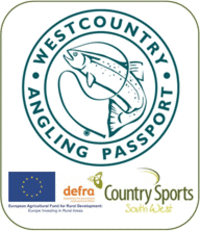The River Fowey at Restormel exhibits a usual range of water levels between 0.24m and 1.50m. This range has been observed for approximately 90% of the monitoring period since its inception. Over the past 12 months, the typical level of the River Fowey at Restormel has maintained a range between 0.25m and 0.80m, persisting at these levels for a minimum of 151 days within the year. The highest recorded level at the River Fowey at Restormel occurred on Thursday, December 27, 1979, at 10:30 pm, reaching a peak of 2.28m. This camera was installed and is maintained by the Environment Agency and can be viewed
here. All content is available under the
Open Government Licence v3.0. Originating from Fowey Well atop the windswept heights of Bodmin Moor, the River Fowey gracefully meanders through 27 miles of picturesque Cornish landscape before gracefully merging with the sea at Fowey. The river intertwines with many of Cornwall's beloved features, and from the summit of Brown Willy, one can witness the River Fowey carving its path through the expansive Bodmin Moor below. Further along its course, it feeds into Siblyback Lake, skirts the front of Trago Mills, flows through the heart of Lostwithiel, and eventually reaches the awe-inspiring Fowey coastline. Beyond its role as a body of water, the River Fowey holds immense significance for the Cornish identity, shaping the region's landscape and connecting its people.Amidst the breathtaking countryside, Restormel stands as a remarkable castle in ruins, offering panoramic views across the valley of the River Fowey. This circular structure, constructed in the late 13th century, served as a luxurious retreat for its medieval occupants and was honored with two visits from Edward, the Black Prince. Restormel, also known as Rostorrmel in Cornish, was a borough in Cornwall, England, forming one of the administrative divisions within the county. The borough's council was headquartered in St Austell, with additional towns including Newquay.The name Restormel derives from Cornish, signifying "the king's tower hill." Adopting a Cornish motto, "Ro an mor hag an tyr," which translates to "From the sea and from the land," the borough acknowledges its close association with the sea, encompassing fishing and tourism, as well as its ties to the land, encompassing china clay and agriculture. Notably, St Austell, the largest settlement in Cornwall, did not possess a Parish/Town Council.As part of the structural changes to local government in England in 2009, the district was abolished on April 1, 2009, marking the conclusion of its existence.




